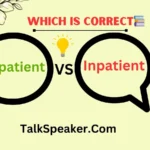Understanding the correct usage of “drove” and “driven” is crucial for clear communication. These two forms of the verb “drive” often cause confusion, leading to common grammatical errors.
This article aims to provide a comprehensive understanding of when to use “drove” versus “driven,” with practical examples and in-depth explanations.
Understanding the Basics: The Verb “Drive”
The verb “drive” is a common word in English, meaning to control the movement of a vehicle, propel or urge something forward, or force someone to act in a particular way. Here’s how it’s conjugated:
| Tense | Form | Example |
| Base form | drive | I like to drive. |
| Simple present | drives | She drives to work every day. |
| Simple past | drove | He drove to the store. |
| Past participle | driven | They have driven for hours. |
| Present participle | driving | I am driving now. |
Usage in Sentences:
- Drive: “I drive to work every day.”
- Drove: “Yesterday, I drove to the countryside.”
- Driven: “I have driven this route many times.”
The Simple Past and Past Participle Forms of “Drive”
Drove: The Simple Past Tense
“Drove” is the simple past tense of “drive.” It is used to describe an action that happened and was completed in the past.
Examples:
- “She drove to the beach last weekend.”
- “We drove through the night to reach our destination.”
- “He drove a truck before switching to a car.”
Driven: The Past Participle
“Driven” is the past participle of “drive” and is used with auxiliary verbs to form perfect tenses and the passive voice.
Examples:
- “They have driven across the country.”
- “The car was driven by a professional driver.”
- “I had driven that road before the construction began.”
Distinguishing Between “Drove” and “Driven”
Grammatical Differences
The primary difference lies in their grammatical roles:
- Drove: Simple past tense, used independently.
- Driven: Past participle, used with auxiliary verbs.
Usage in Sentences
Drove:
- “She drove home in the rain.”
- “We drove the old car to the scrapyard.”
Driven:
- “She has driven home in the rain many times.”
- “The car was driven to the scrapyard.”
How Context Influences the Correct Usage
Context plays a vital role in determining whether to use “drove” or “driven.” Understanding the context helps clarify the intended meaning.
Practical Scenarios
- Past Action (Drove): “Last night, I drove to the city.”
- Perfect Tense (Driven): “I have driven to the city many times before.”
In the first example, “drove” indicates a completed action in the past. In the second example, “driven” is part of the present perfect tense, indicating an action that has relevance to the present.
Common Errors to Avoid: “Drove” Vs. “Driven”
Frequent Mistakes
- Incorrect: “I have drove this road before.”
- Correct: “I have driven this road before.”
Correction Tips
- Use “drove” when describing a completed action in the past without auxiliary verbs.
- Use “driven” with auxiliary verbs (has, have, had) to form perfect tenses or in passive constructions.
Grammatical Rules for Using “Drove” Correctly
Simple Past Rules
“Drove” should be used to describe actions that were completed in the past.
Examples:
- “He drove to the office yesterday.”
- “They drove for hours to get here.”
Sentence Structures
Correct:
- “She drove her kids to school.”
- “I drove all night.”
When to Use “Driven” in Perfect Tenses
Perfect Tenses Overview
Perfect tenses are used to indicate actions that are completed at some point in relation to the present, past, or future.
| Tense | Example |
| Present Perfect | “I have driven this route before.” |
| Past Perfect | “He had driven the car before dawn.” |
| Future Perfect | “By tomorrow, she will have driven 100 miles.” |
Examples
- Present Perfect: “I have driven to the store many times.”
- Past Perfect: “She had driven that car before selling it.”
- Future Perfect: “By the end of the day, they will have driven 200 miles.”
Exploring the Past, Present, and Future Perfect Constructs
Past Perfect
The past perfect tense shows that an action was completed before another action in the past.
Examples:
- “By the time he arrived, she had driven away.”
- “They had driven all night before they found a place to rest.”
Present Perfect
The present perfect tense shows that an action has relevance to the present.
Examples:
- “I have driven this road many times.”
- “She has driven across the country.”
Future Perfect
The future perfect tense shows that an action will be completed before a specific future time.
Examples:
- “By next week, I will have driven 1,000 miles.”
- “They will have driven for hours by the time they reach their destination.”
Digging Deeper: The Impact of Tense on Meaning
Nuances of Meaning
Tense can change the meaning and nuance of sentences using “drove” and “driven.”
Examples:
- Past (Simple): “She drove to the store.”
- Indicates a specific past event.
- Present Perfect: “She has driven to the store.”
- Indicates an action completed at some point before now, with relevance to the present.
- Past Perfect: “She had driven to the store.”
- Indicates an action completed before another past action.
Advanced Examples
- Simple Past: “They drove through the night.”
- Present Perfect: “They have driven through the night before.”
- Past Perfect: “They had driven through the night when they arrived.”
Conclusion
Summary
Understanding the correct usage of “drove” and “driven” is essential for clear and effective communication. By mastering these forms and their proper contexts, you can avoid common grammatical errors and enhance your writing and speaking skills.
Final Thoughts
Language is a powerful tool, and using it correctly makes a significant difference in how your message is received. Remember the rules, practice regularly, and soon using “drove” and “driven” correctly will become second nature.
Call to Action
Start applying these rules in your daily communication. Whether you’re writing an email, crafting a story, or just chatting with friends, the correct usage of “drove” and “driven” will make your language clear and impactful.
Additional Resources
References and Further Reading
- GrammarBook.com: Drive, Drove, Driven
- Merriam-Webster Dictionary: Drive
Practice Exercises
- Rewrite the following sentences using the correct form of “drive”:
- “I have drove this car before.”
- “She had drove to the store before I called.”
- “They will have drove by the time we arrive.”
By mastering these details and understanding the nuances of “drove” and “driven,” you can significantly improve your grammar and writing skills. Happy driving!

Sophie Mitchell, a seasoned English educator, brings her passion for language and years of teaching expertise to TalkSpeaker. With a knack for simplifying grammar and expanding vocabulary, she empowers learners to master English with confidence.




